Liberty with a Side of Beatdown – A Guide to DeGrey
by major_shiznick
HP: 90
Combo Points: 4
Normal Attacks: x.6 speed
Normal Throws: x.8 speed, 8 damage
Overview
DeGrey isn’t about oppressing the opponent with repeated combat wins or building up to a strong endgame; he’s typically better suited to ending rounds with a few freight-train combos. With high-damage combo pieces like Pilebunker (Q) and Final Arbiter (AA), he can readily covert combat wins into incredible damage… if given the opportunity. Unfortunately, DeGrey’s fastest combo starters are the unimpressive Spectral Pull/Push (2/3). Furthermore, he has no 4-attack to chain from these, nor does he have Linkers to extend his combos, and his most damaging combos start off the slowest special attack in the game, Pilebunker! Oh, and his normal throws are among the slowest in the game. What’s a diplomat to do?
The trick is that DeGrey doesn’t play fair. Most characters’ attacks outspeed his, but he makes up for it with full combos off of his super dodge, Ghost Riposte (A). Characters who try to bully him with faster throws get trumped by the Point/Counterpoint ability on DeGrey’s 7, which lets his 7 throw “beat” any other throws by flipping to the attack side. Normally, a slow character like DeGrey is vulnerable to mixup normals when knocked down with a small hand. But with the threat of Spirit Justice (K) bolstered by Moral High Ground, DeGrey can scare opponents from taking advantage of his vulnerability. DeGrey creates openings by making the opponent play around one of his powerful options and countering with a different one. Some examples:
Opponent suspects A-dodge, and so attacks less than usual → DeGrey counters with 7-throw, normal attacks, or Q
Opponent suspects 7-throw, and so attacks more than usual → DeGrey counters with A dodge, normal attacks, or K
Opponent suspects Q, and so throws less than usual → DeGrey counters with A-dodge or K
Learning to identify a fearful opponent and how best to exploit them is one of the first steps to improving with DeGrey, as is getting a feel for when the opponent is likely to disrespect a telegraphed threat. Strong opponents will mix up their game, so be on the lookout!
Claiming the Moral High Ground
DeGrey’s innate ability lets him score additional damage on his faces and aces for having fewer cards than the opponent. DeGrey punishes opponents who hoard cards and incentivizes them to play with more limited resources than normal. It is important to realize that DeGrey’s damage bonuses are calculated after finishing a combo, so combos that use more cards net additional damage for any faces/aces in them.
A common error is to misread DeGrey’s innate as “Don’t block ever.” While keeping hand size low does lead to more damage on hits, DeGrey can’t sustain good combos nor can he properly defend against threats when at very low hand sizes. DeGrey should be blocking less often than most characters on average, but because his deck is contains specific powerful cards, blocking is the best way to draw them if DeGrey’s opening hand is subpar.
In many matchups, normal attacks make for an excellent middle ground option to balance card draw and innate potency. If an early normal attack hits, DeGrey draws a card and can follow with a small combo if desired. If that normal is blocked, DeGrey still gains a card (usually), but the opponent gains two. For most characters, such an outcome is moderately negative, but DeGrey enjoys an exclusive silver lining: some bonus damage on a future combo. This outcome still favors the opponent, though, and the card draw and future damage are consolation prizes more than anything.
Mighty Fists
All this mention of DeGrey’s damage output begs explanation. Setting aside the fine details for later sections, the centerpieces of DeGrey’s righteous ravaging are Pilebunker and Final Arbiter. Pilebunker offers excellent damage and a knockdown even when not followed up, and DeGrey has no shortage of solid followups available to make a confirmed Pilebunker hurt. The main one is Final Arbiter, DeGrey’s 2-Combo Point AA 20-damage Ender. Costing only 2 Combo Points means that DeGrey can use Final Arbiter in any combo he starts, provided he has both the Aces in hand. With three Aces in hand, DeGrey has access to massively damaging combos off of a Starter attack, a throw, or Ghost Riposte. In short, having A is good; having AA is better; having AAA is Diplomatic.
So how to get these much-valued Aces? Like most other characters, DeGrey’s options are to…
-
a)…draw them naturally. It’s reasonable to expect to see one or two Aces per game come off the top of the deck, assuming a moderate amount of blocking and normal attacks.
-
b)…land a Gold Burst. In general, Rewind Time is a better use of Jokers, but Gold Burst is an invaluable tool when attempting a comeback or when pressured by an opponent with dominating attacks or throws.
-
c)…chain three normals into a straight. DeGrey’s only straight is 5 > 6 > 7, which requires giving up his potent 7-throw. The strength of 7 as a throw and the high-risk nature of a 5-attack means DeGrey should attempt straights only rarely.
-
d)…power up. The rule of thumb for powering up is that quads are better than trips, which are much better than pairs. DeGrey’s little twist is that he favors whatever will get him AAA. Barring that, his affinity for lower-than-average hand sizes means he doesn’t mind the inefficiency of powering up a pair for one Ace, so long as his hand has another Ace or two to keep it company.
Without Aces, DeGrey is still perfectly capable of laying down some hurt using Daggerfall Thrust (J) as a combo ender (especially after throws!) or good ol’ naked Pilebunker, but it’s harder to do. If DeGrey can’t credibly leverage Ghost Riposte as a threat to make the opponent block or throw, his slow throws and Pilebunkers are less likely to hit. DeGrey needs at least one ace to play his big-damage game and should be considered at a disadvantage whenever he doesn’t have one, all other things being equal.
Silver Tongue
Thus far, DeGrey’s Troublesome Rhetoric ability (4) has gone conspicuously unmentioned. The ability allows DeGrey to “give a troubling speech on the evils of _____”, where the player fills in the blank with any of the four combat options. If the opponent reveals that option in combat, DeGrey is awarded 12 life. Beginners tend to love this ability, fall out of love as both they and their opponents learn to “solve” it, then rediscover it once they have a handle on how to deviate from “standard practice”. To avoid getting too far ahead, it’s useful to start off by describing the basic way to use the ability.
Call: Attack:
-
Play: 7-throw
The only way to beat DeGrey’s 7-throw is to play an attack faster than 7.6 or Gold Burst. The 4-7 combination play means that the opponent’s only way to “win” combat is to attack for more than 12 damage or to play a Joker that they would likely prefer to use as combo escape. -
Play: Dodge
Both of the opponent’s counterplays against Point-Counterpoint lose to dodges and lose badly to Ghost Riposte. Winning with a dodge in this setup is adding insult to injury, as DeGrey gets both the life gain and a chance to hit back.
There are also more situational, but mostly sound setups. These are listed for completeness and can be skipped over if the reader’s head is on the verge of explosion.
Call: Block
-
Play: K
This setup is most common against opponents who are knocked down or are Rook. If they do not have an attack that beats Spirit Justice, the only way for them to win combat is to block it, taking 2 damage and giving DeGrey 12 life. -
Play: Normal
If DeGrey suspects the opponent has resigned themselves to blocking, he can attempt a mixup normal instead of Spirit Justice. Be careful using this ploy multiple times against the same opponent, as they can usually outspeed any of DeGrey’s normals. -
Play: B/D
A savvy opponent may attempt to outspeed an attempted Spirit Justice or crossup. In these situations, DeGrey can block if his hand is poor or dodge if he has a good followup.
Call: Throw
-
Play: Ace Dodge
This play makes Ghost Riposte very safe, as the only way to beat it is by throwing. Since it is easy for the opponent to play around, this is a low-risk, low-reward setup that rarely nets DeGrey an advantage but can buy him a turn to stall if he needs it for some reason. -
Play: Q
If the opponent can still K.O. DeGrey off of a throw after the life gain, they will be very inclined to disrespect the “obvious” Ghost Riposte setup. DeGrey can use this opening to attempt a Pilebunker or a normal attack for surprising turn of events.
Call: Dodge
-
Play: K
Dodge is generally the weakest call for Troublesome Rhetoric, but if the opponent can’t outspeed Spirit Justice and will die to its block damage, they’re helpless to do anything but give DeGrey 12 life for free. -
Play: Throw
In the above scenario, DeGrey can throw if he is mean and doesn’t care if his friends stop talking to him.
As hinted at in previous sections, DeGrey’s third trademark ability is Point/Counterpoint on his 7. Whenever DeGrey reveals either side of his 7, he can discard a card to rotate it. The usual way to use the ability is to reveal the throw side and flip it to the attack side if the opponent played a faster throw. There are rare occasions when DeGrey may want to flip to the 7-attack even if he wins combat with the throw, and there are times when he may prefer to lead the attack side, but these are few and far between. By and large, it’s useful to envision a P/CP-backed 7-throw as Yomi’s fastest throw, so long as DeGrey has an unwanted card he can spend in case the throw side loses. Because such a move is so powerful, using 7s as anything but combat-reveals is usually a waste of valuable resources.
Court Proceedings
A typical match for DeGrey can be divided into three sections: early, middle, and late game.
The early game is dictated by DeGrey’s hand. He is happiest when dealt a varied hand with normal attacks, blocks, a face card or two, and/or an ace. Hands like these are well-suited for getting moderate damage off of combat wins but still having options to draw cards and keep his hand size up around six to eight cards. If his hand is poor, DeGrey should try to get a pair or trips in hand to power up for aces. Early Ghost Riposte plays can make opponents fearful and open up DeGrey’s normal attacks and throws to continue digging through his deck for better cards. If DeGrey lands an early throw, he can follow up with a conservative combo or just knock the opponent down to help set up a mixup normal. DeGrey should seek to hit with any Pilebunkers drawn in the first few turns, since holding them for a juicy Ghost Riposte combo later in the round increases the chance of your opponent being able to Combo Escape the damage.
Once DeGrey has lasted a few turns and drawn some of his deck, he should figure out how best to use whatever good cards he drew and form a more specific plan around those. The important thing to keep in mind is that whatever plan he chooses, it needs to result in good damage if DeGrey hits. Setting up a 4-7 combination and then not following up is lame. Making the opponent play the Pilebunker/Ghost Riposte guessing game loses its potency without at least a J to follow up. This is the stage of the game where having Final Arbiter is most useful and where DeGrey should be able to leverage his scary options against the opponent. It is also the stage of the game where he is most vulnerable to Combo Escape Jokers, since he cannot often afford to spend good cards just to have their damage prevented.
In the late game, DeGrey just needs to do whatever he can to K.O. the opponent. His job is to determine what combat options lead to lethal damage (not forgetting to account for his innate) and play to maximize their chances of hitting. Hopefully the opponent has already played any Jokers they drew, so Ghost Riposte should be a staple of the endgame. There are also several Point/Counterpoint setups well-suited to the endgame, so DeGrey should use any 4s he draws to at least threaten the opponent with something, even if it is entirely fake. If DeGrey burned too many of his good cards getting to this stage of the game, things can be difficult, and he will have to rely on strong reads to eek out the last few points of damage.
 - Many of Grave’s favorite tactics like spamming J in the early game or turtling with blocks and Q are riskier than usual against DeGrey, who can get Ghost Riposte early to ward off J and keep his hand slim to discourage turtling. However, some of Grave’s most reliable combos start off of throws, and his counter ability on the T makes the Troublesome Rhetoric and Point/Counterpoint unreliable, so DeGrey’s throws may feel slower than normal. If Grave is playing to land True Power of Storms, DeGrey should keep a K in hand in case he gets knocked down, which is a situation that is otherwise heavily advantaged for Grave.
- Many of Grave’s favorite tactics like spamming J in the early game or turtling with blocks and Q are riskier than usual against DeGrey, who can get Ghost Riposte early to ward off J and keep his hand slim to discourage turtling. However, some of Grave’s most reliable combos start off of throws, and his counter ability on the T makes the Troublesome Rhetoric and Point/Counterpoint unreliable, so DeGrey’s throws may feel slower than normal. If Grave is playing to land True Power of Storms, DeGrey should keep a K in hand in case he gets knocked down, which is a situation that is otherwise heavily advantaged for Grave.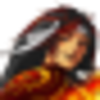 -
-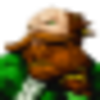 - Midori’s non-Dragon attacks are very poor, so he will spend most of the early game blocking and throwing until he’s built up a hand that can sustain Dragon Form. Usually, Midori can protect those blocks with his fast throws, but DeGrey can threaten early 7-throws or even the occasional bold Pilebunker to frighten Midori into playing his awkward, inefficient human attacks. When DeGrey scores a knockdown, he can attempt normal attacks with near-impunity if Midori seems unlikely to attack with J, Q, or AA. Once Midori gets Dragon Form or Glimpse of the Dragon to access his dragon moves, DeGrey gets to enjoy the privilege of using Ghost Riposte to dodge dragon attacks, as long as watches out for the big K-throw and Final Dragon Buster. DeGrey should also save a K or two for Dragon Form to keep his attack-speed advantage.
- Midori’s non-Dragon attacks are very poor, so he will spend most of the early game blocking and throwing until he’s built up a hand that can sustain Dragon Form. Usually, Midori can protect those blocks with his fast throws, but DeGrey can threaten early 7-throws or even the occasional bold Pilebunker to frighten Midori into playing his awkward, inefficient human attacks. When DeGrey scores a knockdown, he can attempt normal attacks with near-impunity if Midori seems unlikely to attack with J, Q, or AA. Once Midori gets Dragon Form or Glimpse of the Dragon to access his dragon moves, DeGrey gets to enjoy the privilege of using Ghost Riposte to dodge dragon attacks, as long as watches out for the big K-throw and Final Dragon Buster. DeGrey should also save a K or two for Dragon Form to keep his attack-speed advantage. - As in many of her matchups, Setsuki wrecks DeGrey on both attack and throw speed, and it’s DeGrey’s job to make her pay as hard as possible for her mistakes and empty her short lifebar with as few combat wins as possible. DeGrey shouldn’t expect to get much from his innate, as Setsuki’s own innate lets her keep her hand small on average — small enough that DeGrey should usually abandon his low-handed tendencies and block more like a normal character so that he can always max out damage on a combat win. TR and P/CP play an odd role here, as Setsuki can has to play a total of three cards to counter either one. If she’s under 4 cards in hand, she can’t afford to counter an ability. If she’s sitting at 4-6 cards, playing an ability that she counters could be her ticket out of an awkward hand. On the flip side, if she doesn’t counter in that situation, she probably either doesn’t have the counter or has too much damage in her hand for the counter to be worth it. Treating his 4 as a sort of probe can help DeGrey get some insight into Setsuki’s hand in this way, but beware of savvy Sets players who let the 4 go and then counter P/CP.
- As in many of her matchups, Setsuki wrecks DeGrey on both attack and throw speed, and it’s DeGrey’s job to make her pay as hard as possible for her mistakes and empty her short lifebar with as few combat wins as possible. DeGrey shouldn’t expect to get much from his innate, as Setsuki’s own innate lets her keep her hand small on average — small enough that DeGrey should usually abandon his low-handed tendencies and block more like a normal character so that he can always max out damage on a combat win. TR and P/CP play an odd role here, as Setsuki can has to play a total of three cards to counter either one. If she’s under 4 cards in hand, she can’t afford to counter an ability. If she’s sitting at 4-6 cards, playing an ability that she counters could be her ticket out of an awkward hand. On the flip side, if she doesn’t counter in that situation, she probably either doesn’t have the counter or has too much damage in her hand for the counter to be worth it. Treating his 4 as a sort of probe can help DeGrey get some insight into Setsuki’s hand in this way, but beware of savvy Sets players who let the 4 go and then counter P/CP. -
- - Like many mirrors, this matchup is a contest of who can get the good cards and avoid using them as long as possible to continue having the better hand. Lots of goofy stuff can happen in this matchup: Clashing Pilebunkers, clashing 7-throws, Pilebunkers beating 7-throws, 5-attacks beating Pilebunkers. Play your heart out, keep your eyes peeled for leaked hand information (as well as red herrings!), and may the yomi be with you.
- Like many mirrors, this matchup is a contest of who can get the good cards and avoid using them as long as possible to continue having the better hand. Lots of goofy stuff can happen in this matchup: Clashing Pilebunkers, clashing 7-throws, Pilebunkers beating 7-throws, 5-attacks beating Pilebunkers. Play your heart out, keep your eyes peeled for leaked hand information (as well as red herrings!), and may the yomi be with you.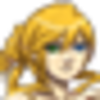
 - If DeGrey grabs an early A, he can make it hard for Geiger to pressure with Time Spirals, who will often then try to land a K to score a knockdown and bring back the pressure. In order to avoid massive damage bonuses from Moral High Ground, it’s common for Geiger to shy away from building up a huge combo for Temporal Distortion, instead using it to retrieve J and Q for reliable, Joker-resistant, big-damage throw combos. DeGrey can quickly find himself hurting if he gets too loose with Ghost Riposte, as Geiger’s slow throw speed is compensated for with good damage and scary knockdown scenarios. However, as long as DeGrey doesn’t get lazy and predictable, he should have the upper hand for most of the match.
- If DeGrey grabs an early A, he can make it hard for Geiger to pressure with Time Spirals, who will often then try to land a K to score a knockdown and bring back the pressure. In order to avoid massive damage bonuses from Moral High Ground, it’s common for Geiger to shy away from building up a huge combo for Temporal Distortion, instead using it to retrieve J and Q for reliable, Joker-resistant, big-damage throw combos. DeGrey can quickly find himself hurting if he gets too loose with Ghost Riposte, as Geiger’s slow throw speed is compensated for with good damage and scary knockdown scenarios. However, as long as DeGrey doesn’t get lazy and predictable, he should have the upper hand for most of the match. - Lum doesn’t have many good ways to prevent his hand from inflating, and his usual penchant for spamming special attacks to recur with Roll the Dice only works until DeGrey starts dodging. His throws are also very poor at punishing an ace-heavy DeGrey, as they don’t even knock down to set up an advantage the next turn. He will, however, usually score a Jackpot or two if DeGrey is low-handing with aces in hand. Lum will usually block often and just hope DeGrey doesn’t score too much bonus damage from his innate, while hoping to unload cards and score damage on a combo starter when DeGrey attempts a throw. DeGrey’s main goals are not to get nipped when attempting throws and not to run out of gas before Lum can equalize with Poker Flourish damage.
- Lum doesn’t have many good ways to prevent his hand from inflating, and his usual penchant for spamming special attacks to recur with Roll the Dice only works until DeGrey starts dodging. His throws are also very poor at punishing an ace-heavy DeGrey, as they don’t even knock down to set up an advantage the next turn. He will, however, usually score a Jackpot or two if DeGrey is low-handing with aces in hand. Lum will usually block often and just hope DeGrey doesn’t score too much bonus damage from his innate, while hoping to unload cards and score damage on a combo starter when DeGrey attempts a throw. DeGrey’s main goals are not to get nipped when attempting throws and not to run out of gas before Lum can equalize with Poker Flourish damage.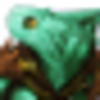 - Arg doesn’t mind DeGrey’s innate too much, as he’s usually happy to turn spare cards into aces to keep his hand down. With the game’s most reliable counter, Arg can also keep DeGrey’s 7-throw in check without having to stick out attacks. With each character having a strong counter to attacks, the matchup can be slow going, and DeGrey will rack up lots of damage from Arg’s innate unless he reaches out and goes for throws, and then he has to choose between the knockdown or a combo. If he can follow up effectively, it’s best for DeGrey to take the combo unless he can make as good or better threats off of a crossup normal or A-dodge the next turn. DeGrey should also consider dodging into single Pilebunkers to get a knockdown in situations where throws are scarce.
- Arg doesn’t mind DeGrey’s innate too much, as he’s usually happy to turn spare cards into aces to keep his hand down. With the game’s most reliable counter, Arg can also keep DeGrey’s 7-throw in check without having to stick out attacks. With each character having a strong counter to attacks, the matchup can be slow going, and DeGrey will rack up lots of damage from Arg’s innate unless he reaches out and goes for throws, and then he has to choose between the knockdown or a combo. If he can follow up effectively, it’s best for DeGrey to take the combo unless he can make as good or better threats off of a crossup normal or A-dodge the next turn. DeGrey should also consider dodging into single Pilebunkers to get a knockdown in situations where throws are scarce.
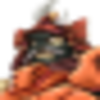 - Like Lum, Onimaru’s inefficient, no-knockdown throws make it hard to deal with lots of dodging, which is compounded by his Guard Crush innate losing most of its teeth against DeGrey. Typically, Onimaru will block frequently and use the cards he draws to pump his throws and get his hand back down to a safer size. If DeGrey has the chance to, he should consider playing 7-throws early, possibly even spending TR in addition, as Onimaru is unlikely to have the multiple J or K necessary to punish hard. If Onimaru isn’t attacking into A-dodge, DeGrey’s needs to reach out with throws and normals but be mindful that in doing so, he opens himself up to Onimaru’s hard-hitting attacks (with Final Authority for knockdown!) and dodges.
- Like Lum, Onimaru’s inefficient, no-knockdown throws make it hard to deal with lots of dodging, which is compounded by his Guard Crush innate losing most of its teeth against DeGrey. Typically, Onimaru will block frequently and use the cards he draws to pump his throws and get his hand back down to a safer size. If DeGrey has the chance to, he should consider playing 7-throws early, possibly even spending TR in addition, as Onimaru is unlikely to have the multiple J or K necessary to punish hard. If Onimaru isn’t attacking into A-dodge, DeGrey’s needs to reach out with throws and normals but be mindful that in doing so, he opens himself up to Onimaru’s hard-hitting attacks (with Final Authority for knockdown!) and dodges. -
-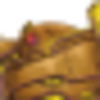 - While most characters try to avoid Long Range with lots of attacks and some dodging, DeGrey prefers the opposite approach. This comes with the benefit that BBB won’t draw as many cards as usual from blocking a lot, making it take longer for him to get the cards he loves, most importantly his K-throw. Ghost Riposte continues to be an effective tool even at Range, as BBB’s only way to deal damage against it is K throw. If BBB gets the right cards and reads, though, he can keep DeGrey knocked down with K-throw and leave his head spinning with threats from normals, Junkshot, and dodge > K-throw. To make these situations less tricky for DeGrey, he should save his own K for knockdown Range scenarios. If BBB isn’t drawing K, his next most likely strategy is to block a ton and power up for his dominant AA attack to pressure DeGrey into predictable dodges and try for normal throws. In both scenarios, DeGrey is still the one in the driver’s seat, and the challenge is on BBB to get and maintain Range. There’s a lot more intricacy to this matchup than a concise blurb can communicate, though, and BBB has many situational ways to deal with basic DeGrey play.
- While most characters try to avoid Long Range with lots of attacks and some dodging, DeGrey prefers the opposite approach. This comes with the benefit that BBB won’t draw as many cards as usual from blocking a lot, making it take longer for him to get the cards he loves, most importantly his K-throw. Ghost Riposte continues to be an effective tool even at Range, as BBB’s only way to deal damage against it is K throw. If BBB gets the right cards and reads, though, he can keep DeGrey knocked down with K-throw and leave his head spinning with threats from normals, Junkshot, and dodge > K-throw. To make these situations less tricky for DeGrey, he should save his own K for knockdown Range scenarios. If BBB isn’t drawing K, his next most likely strategy is to block a ton and power up for his dominant AA attack to pressure DeGrey into predictable dodges and try for normal throws. In both scenarios, DeGrey is still the one in the driver’s seat, and the challenge is on BBB to get and maintain Range. There’s a lot more intricacy to this matchup than a concise blurb can communicate, though, and BBB has many situational ways to deal with basic DeGrey play.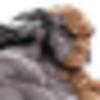 -
- - This matchup is very swingy and massive momentum shifts can and will happen. Persephone has all the fragility of Setsuki but typically lacks the speed advantages Sets has, so DeGrey can easily land the three-four combos he needs for a K.O. if he gets a few correct guesses, but if he missteps when rushing her down, he’ll leave himself without the defensive options necessary to handle being knocked down while she recurs her best cards turn after turn. Furthermore, Bare Your Soul is very effective at digging through DeGrey’s deck and eliminating his centerpiece cards like 7, Q, and K. DeGrey also needs to keep in mind that Mistress’s Command can be ruinous if he’s hit with a small hand, so he shouldn’t spend cards recklessly if Persephone is likely to try for a Command. DeGrey should save his 4 to be even-numbered blocks, but he can use them to try bait out counters before attempting a 7-throw. If Perse counters the 7, it’s usually worth it to pay the 10 life, since it’s a small price in comparison to not dealing the damage DeGrey needs.
- This matchup is very swingy and massive momentum shifts can and will happen. Persephone has all the fragility of Setsuki but typically lacks the speed advantages Sets has, so DeGrey can easily land the three-four combos he needs for a K.O. if he gets a few correct guesses, but if he missteps when rushing her down, he’ll leave himself without the defensive options necessary to handle being knocked down while she recurs her best cards turn after turn. Furthermore, Bare Your Soul is very effective at digging through DeGrey’s deck and eliminating his centerpiece cards like 7, Q, and K. DeGrey also needs to keep in mind that Mistress’s Command can be ruinous if he’s hit with a small hand, so he shouldn’t spend cards recklessly if Persephone is likely to try for a Command. DeGrey should save his 4 to be even-numbered blocks, but he can use them to try bait out counters before attempting a 7-throw. If Perse counters the 7, it’s usually worth it to pay the 10 life, since it’s a small price in comparison to not dealing the damage DeGrey needs. -
- - Gwen has a hard time dealing with DeGrey. Her Shadow Plague innate fuels Moral High Ground on top of draining her own health. Relentless Strikes loses its bite once DeGrey nabs an ace. She’s in too much of a rush to deal damage for her to keep DeGrey knocked down much. If she’s too predictable about playing her combo starters, she’ll eat a juiced-up Spirit Justice or a dodge-cornfirmed Pilebunker. Her Dreadlands Portal/dodge mixup that carries her well in other matchups just straight-up loses to DeGrey’s 7-throw. The main advantage Gwen can exert against DeGrey is that she’ll likely draw at least one Joker, possibly both, which are her lifeline. But since DeGrey isn’t in too much rush to empty Gwen’s lifebar, he can afford to be patient and call out facedowns that smell like Jokers. If DeGrey plays to his advantages in this matchup and doesn’t waste all his damage on Jokers, it takes multiple good reads for Gwen to win.
- Gwen has a hard time dealing with DeGrey. Her Shadow Plague innate fuels Moral High Ground on top of draining her own health. Relentless Strikes loses its bite once DeGrey nabs an ace. She’s in too much of a rush to deal damage for her to keep DeGrey knocked down much. If she’s too predictable about playing her combo starters, she’ll eat a juiced-up Spirit Justice or a dodge-cornfirmed Pilebunker. Her Dreadlands Portal/dodge mixup that carries her well in other matchups just straight-up loses to DeGrey’s 7-throw. The main advantage Gwen can exert against DeGrey is that she’ll likely draw at least one Joker, possibly both, which are her lifeline. But since DeGrey isn’t in too much rush to empty Gwen’s lifebar, he can afford to be patient and call out facedowns that smell like Jokers. If DeGrey plays to his advantages in this matchup and doesn’t waste all his damage on Jokers, it takes multiple good reads for Gwen to win.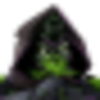 -
-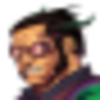 -
-